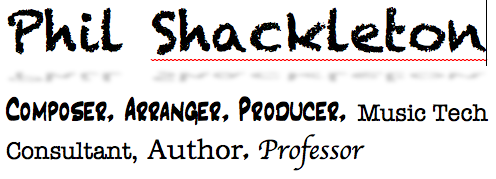When I compose, I always have to do something new to me, something I haven’t done in just that way before. Composing is in many ways a lot like simply arranging your own musical ideas, but the twist for me is that I don’t think I’ve composed unless I’ve done something that is new to me at the time. When I’m arranging, I simply try to deploy the best stylistic tools for the situation, but when I’m composing, in some sense I am creating the mix of elements that we call “style” in a unique way for each piece. When I’m arranging, I always have a sense of who the audience is. When I’m composing, I’m writing first to create something I want to hear, and only then considering how a particular audience might respond.
When I compose, I try to move out of my “comfort zones” at least some of the time, to find that indefinable “something new” flavor. But it’s easy to be trivially creative, as the 20th century surely proved. The trick is being creative and yet accessible to listeners (though of course audiences differ in this regard).
For me, composing music is about the sound, not about an ideology. I may start out with a general sound goal in mind, which gets more specific as I work. I don’t start out with some non-musical idea making me limit my musical decisions, or some “technique” that I think I have to use for the piece to be “good” or “creative” or “modern,” or for that matter, “culturally relevant” or “academically respectable.” Of course, composing music that sets a text chorally, or music for a film or as underscore for a theatrical production, automatically suggests certain limitations and approaches. If the bad guy is sneaking around in the woods looking for a dropped gun, we probably aren’t scoring it with a harp…. though that might be a clever “against type” idea. We probably won’t set “Silent Night” in dodecaphonic style, though I suppose someone, somewhere, has tried it.
When I’m composing for the concert stage, the sound is the thing. I write what I want to hear.

